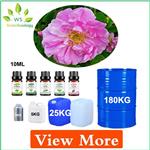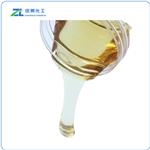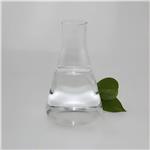Background
Rosa species, commonly known as rose (Family Rosaceae), are among the most popular and widely used medicinal plants worldwide. They originated in the Middle East but are cultivated all over the world. Rose oil is the essential oil extracted from the petals of Rosa species, especially R. damascena and R. centifolia. Some historical evidence shows that rose oil originated from Greece. The main producing countries of this essential oil are Bulgaria, Turkey, and Morocco. This oil is semisolid, pale, yellow, and very expensive. The most critical components of rose oil are terpenes, glycosides, flavonoids, and anthocyanins. In a study carried out on the essential oil of R. damascena in the Kashan region of Iran, 95 components were reported, and the most abundant ones were β-citronellol (14.5-47.5%), nonadecane (10.5-40.5%), geraniol (5.5-18%)[1].

Chemical Properties
Rose oil is obtained by steam distillation of blossoms of Rosa x damascena
Mill.,which is mainly cultivated in Turkey, Bulgaria (Kazanlik rose), and Iran.
Since a reasonable amount of rose oil is still dissolved in the aqueous phase
after steam distillation, the distillation water (rose water) is redistilled or extracted.
Rose oil is a yellow partly crystallized liquid with the characteristic odor of
rose blossoms and distinct tea and honey notes.
d
2020 0.848–0.880; n
20D 1.4520–1.4700; α
20D ?5 ° to ?1.8 °; fp +16–23.5 ℃;
ester value: 7–24; content by GC (Bulgaria/Turkey/Morocco): citronellol:
20–34/34–49/30–47%; geraniol 15–22/8–20/6–23%; nerol
5–12/3–11/3–11%; phenylethyl alcohol <3.5/<3/<3%.
The major constituents of rose oil are (?)-citronellol, geraniol, and nerol.
In contrast to the absolute, the oil contains only a minor amount of phenylethyl alcohol, which is most soluble in water.
Chemical Properties
Rose absolute is prepared from the concrete by extraction with alcohol. The absolute has a typical rose odor. The phenylethyl alcohol content of its volatile portion is 60 to 70%. Typically, solvent extraction yields about 10 times that obtained by steam distillation, in the order of 0.1 to 0.2% (1 to 2 mL concrete/kg flowers). Phenyl-ethyl alcohol is a major oil component, but because of its solubility in water it is usually lost in the distillation water unless collected as rose water. This alcohol is, however, present in the absolute extracted by solvent. Also see Rose.
Chemical Properties
In general, Rose Bulgarian true otto oil (from R. damascena Mill.) is steam-distilled from the flowers, but this requires a high degree of skill. The distillation waters usually are redistilled and this is combined with the original distillate. It has characteristic odor and taste of rose.
Physical properties
Rose otto oil is a pale yellow or olive-yellow liquid that precipitates colorless crystals of stearopten at temperatures below 21°C; the liquid supernate is known as the elaeopten. Bulgarian rose otto has different physical–chemical constants depending on the growing site.
Physical properties
Rose absolute is a reddish liquid. The physical–chemical constants of extracts and distillates are strongly dependent on the type of material used for extraction.
Occurrence
Found in the flowers of Rosa centifolia L. (Fam. Rosaceae) (Guenther, 1952).
Uses
Rose oil Bulgarian is a fragrance for use in various perfumes; for flavoring lozenges, ointments, toilet preparations, etc.; part of the conventional rosejasmin
complex found in countless fashion perfumes; in cassie modifications, carnation bases; and fantasy bouquets; Carnation
Dianthus Oeillet; Violet; Nahema (4.5% of the oil); Orangeflower Fleur D'oranger.
Uses
rose oil has been credited with anti-septic, disinfectant, slightly tonic, and soothing properties. Some sources also cite moisturizing and moisture-retention abilities. It is found helpful in cases of skin redness or inflammation, and where moisturization and regeneration is needed. Rose oil may be beneficial to all skin types, particularly mature, dry, or sensitive skins. As one of the most expensive essential oils, true rose oil is only used in very high-grade perfumes. Rose oil is almost always adulterated with substances like geranium, lemongrass, palmarosa, and terpene alcohols. However, the process of adulteration has become so refined that it is almost impossible to discover frauds. To produce rose oil, rose buds are picked for only a few hours in the morning, right after the dew, and are immediately distilled. According to some sources, 30 roses are required to make one drop of oil. It is considered the least toxic of all essences. given the cost and potential of adulteration, rosewater is widely used as a replacement for rose oil in cosmetics and perfumery. Among its rose oil’s many constituents are citronellol, geraniol, nerol, linalool, farnesol, and eugenol.
Uses
Pharmaceutic aid (perfume).
Definition
Extractives and their physically modified derivatives. Rosa centifolia, Rosaceae.
Preparation
By steam distillation of the flowers of Rosa centifolia L. (Gildemeister & Hoffman, 1959; Naves, 1974).
Essential oil composition
Although rose oil is a very complicated mixture of over 100 different components, the major compound recovered from the blossom is phenylethyl alcohol. The other main components are the rose alcohols geraniol, citronellol and nerol. Several other components are present in very small amounts, but are very important for the overall quality of the oil. For example, the compound damascenone, an important odor constituent, is present in a relatively minor amount.
Safety Profile
Moderately toxic by skin contact. Mildly toxic by ingestion. When heated to decomposition it emits acrid smoke and irritating fumes
References
[1] Safieh Mohebitabar. “Therapeutic efficacy of rose oil: A comprehensive review of clinical evidence.” Avicenna Journal of Phytomedicine 7 1 (2017): 206–213.




